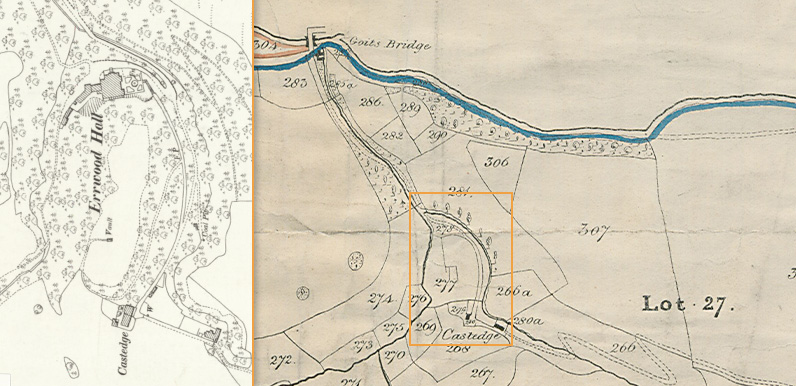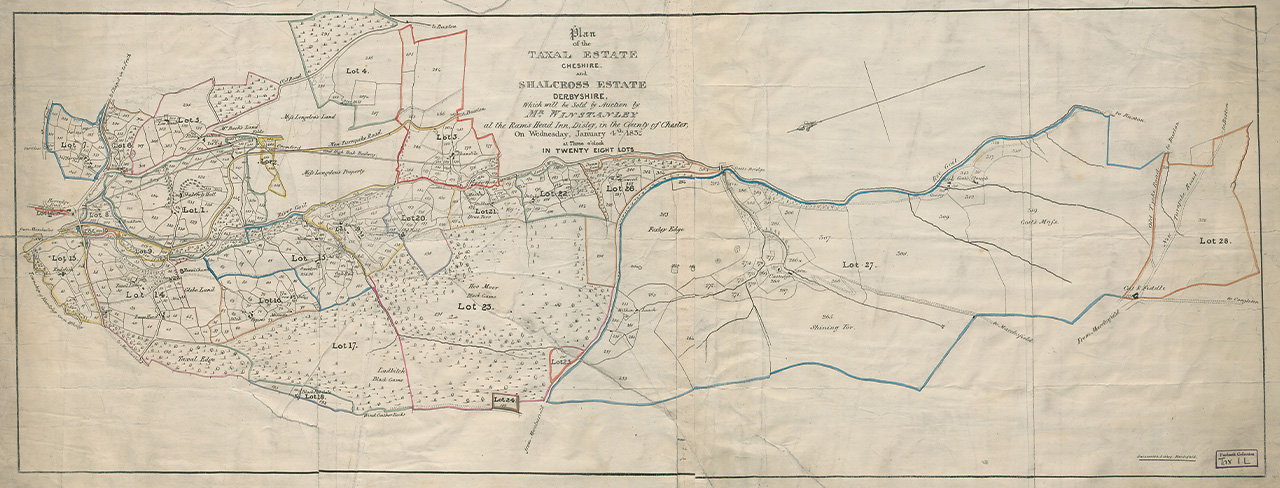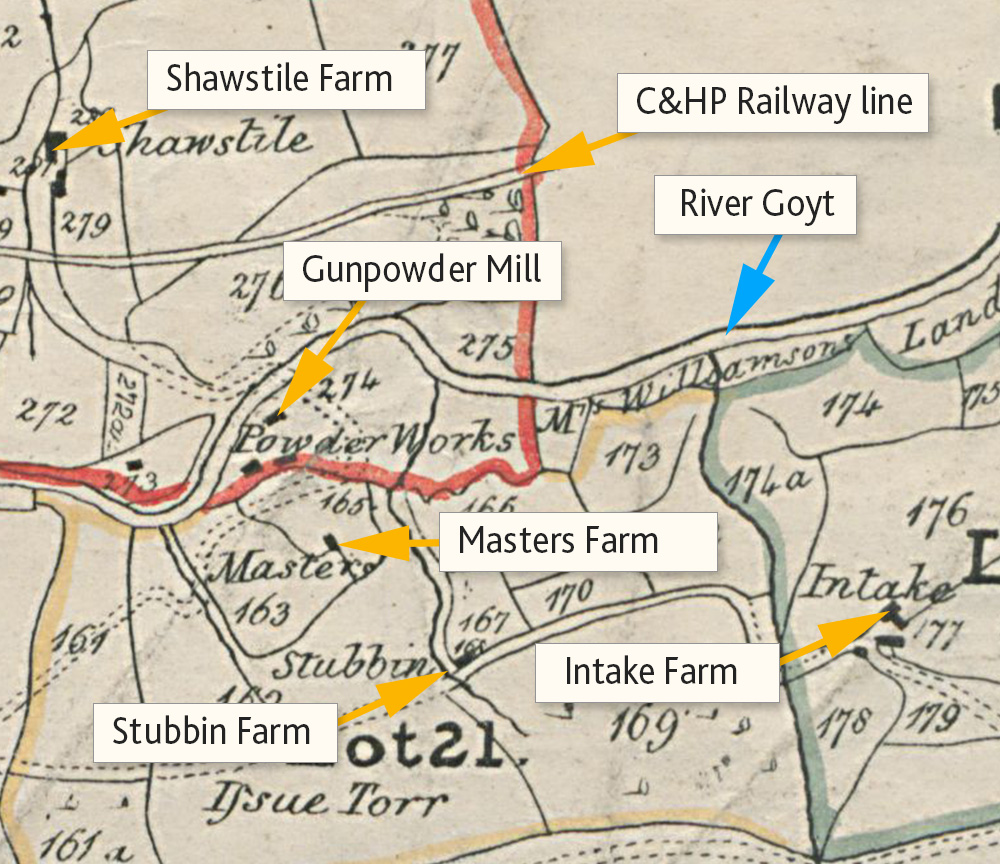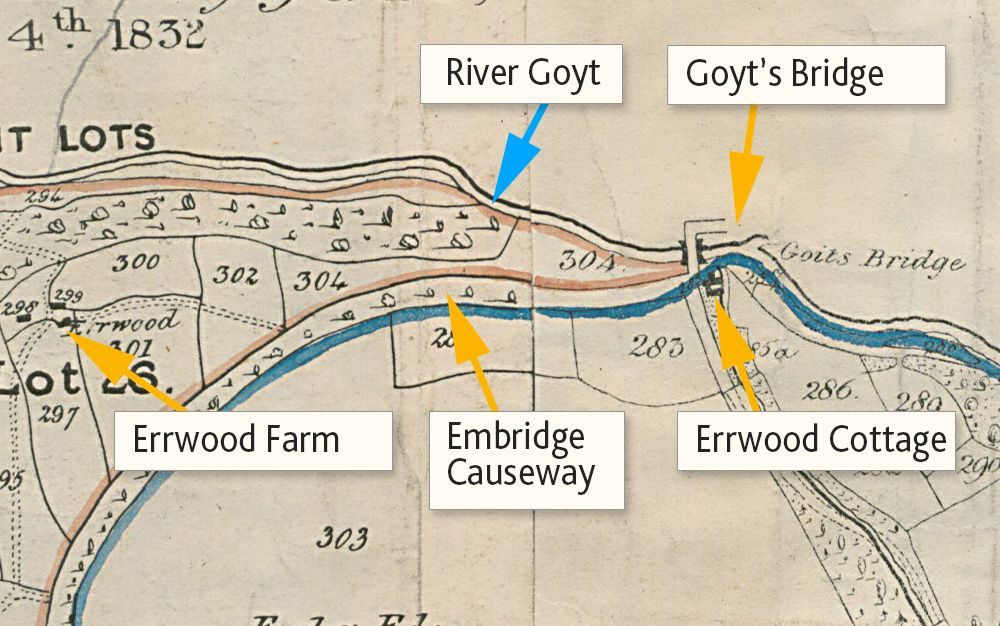Above: This is the full 1832 map – click to enlarge. Or open as a pdf. © Sheffield Archives
Many thanks to David from the Furness Vale History Society for sending me a link to an 1832 map of the Upper Goyt Valley. This is the oldest detailed map I’ve seen of the area and includes some fascinating detail.
It was published for an auction of land belonging to the Taxal and Shallcross Estates, identifying various plots to be sold. I think it must have been at this auction that Samuel Grimshaw (then spelt without the ‘e’ at the end) purchased his Errwood Hall Estate.
Errwood Hall was completed sometime in the mid 1840s, with the work being overseen by Samuel’s son, also called Samuel. The map at top left dates from the late 1890s and shows the hall in its prime.
I’ve outlined in orange the same area on the auction map. It reveals that both Castedge Cottage and Shooter’s Clough Cottage predate the hall. The vault marked on the more recent map is the Grimshawes’ family cemetery and can still be visited today.
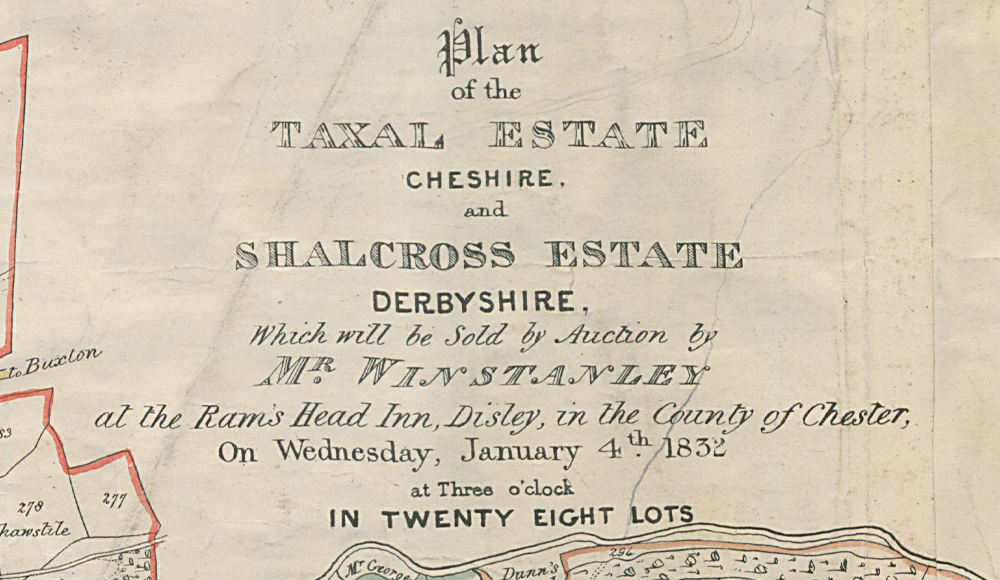
Samuel purchased Lot 27 – which extended from the Cat and Fiddle in the south to Embridge Causeway (the old Roman road) in the north. The 1845 Cheshire tithe map shows that he purchased further lots further north towards Taxal. But I don’t think they extended as far as the Gunpowder Mill.
The Powder Works
Above: Marked on the map as the ‘Powder Works’, the mill was ideally placed to use water power from the Goyt to mix the explosive ingredients of gunpowder. And far enough away from other houses in the event of accidental explosions.
The mill was fairly small at this time, and surrounded by farms that were later demolished when Stockport Corporation obtained the land in 1930, following the death of Mary, the last of the Grimshawes, including Shawstile, Stubbin, Masters and Intake (click any link for more on these houses).
A short section of the Cromford& High Peak Railway line can be seen above the Goyt. The line was opened in 1832 – the same year as the map was published (click here for more on the railway).
Goyt’s Bridge
Above: Samuel Grimshwe’s son was said to have stayed at Errwood Farm to oversee the building of Errwood Hall.
It’s interesting to see that the hamlet of Goyt’s Bridge is captioned as Goits Bridge. There’s a series of ancient maps on this page showing it was called Goythouses up to the mid 18th century, before the name was changed to Goyt’s Bridge.
The only house shown in Goyt’s Bridge is Errwood Cottage, which lay beside a track which would lead up to the hall. There were two other farm houses in the hamlet – Goytshead and Goytsbridge – lying either side of the old packhorse bridge. But they don’t seem to have been included in the auction.
Embridge Causeway is said to have been a Roman road linking the ancient towns of Macclesfield and Buxton, crossing the Goyt over the larger of two bridges in the hamlet.
Goytsclough
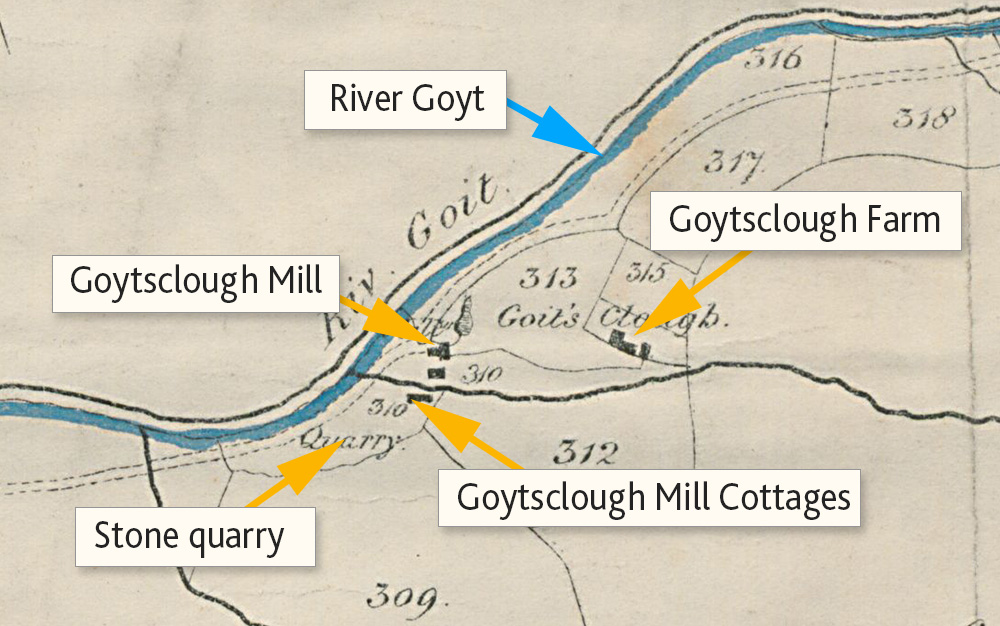
Above: Goytsclough lay to the south of Goyt’s Bridge, towards the Cat & Fiddle.
Goytsclough stone quarry dates back many centuries, and was said to be where Pickford started his removals business in the mid 1600s, taking stone by packhorse trains far and wide, including to pave London’s Regent Street.
The nearby mill also has a rich history, boasting the second largest waterwheel in the country (click for more). At one time it was used to grind down the surface of paving slabs from the quarry. And later to grind stone from another quarry to extract baryte, a chemical used in the manufacture of paint.
Between the quarry and the paint mill lay a line of attractive cottages which may have been home to the managers and their families. And on the hillside above once stood Goytsclough Farm. Today it’s difficult to imagine, in this now quiet and peaceful spot, just how times have changed.
